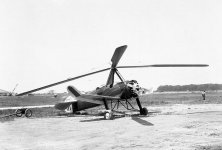chrisk
Gyroplane CFI
- Joined
- Jun 5, 2015
- Messages
- 440
- Location
- Round Rock TX
- Aircraft
- Magni M24, Turbo Mooney 231
- Total Flight Time
- 1000
My experiences with the FAA has been outstanding. In general they have exhibited sound regulations and reasonable enforcement. I think they are close to a model for reasonable rules. That said, no organization is perfect. There is a reason congress got involved with medical reform a few years ago. Pilots were spending thousands of dollars for relatively minor medical issues.My experience with the FAA has been rather different. I have encountered no graft, no business protectionism, and no intent to make things convoluted. Most of them are honestly trying to walk a difficult line between flying freedom and public safety. They don't always get it right, but the motives are not venal, corrupt, or unworthy.
And I in no way meant to imply the FAA could be bought with graft. I have never seen or heard of such a thing. If you want to see graft, look at building permits in some of the larger cities. --The places where you need to hire someone to expedite the process.

